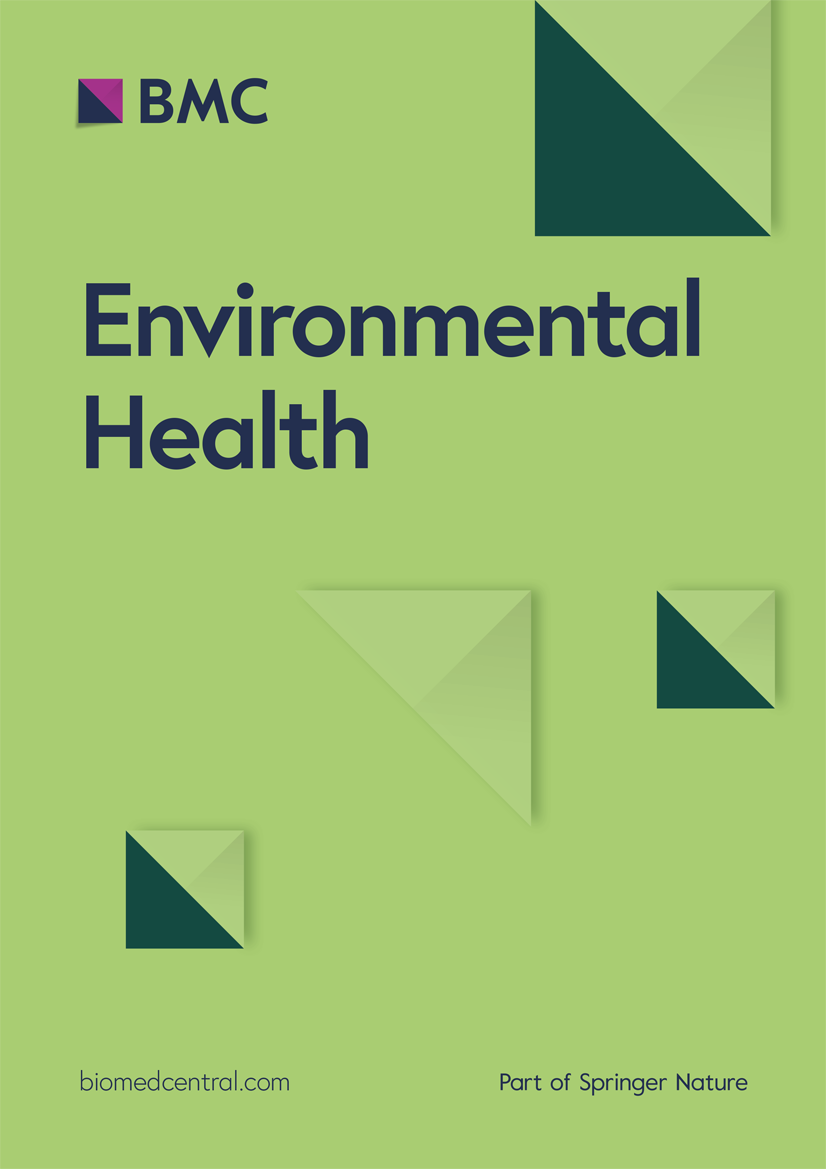Report on Environmental Factors in Childhood Cancer and Alignment with Sustainable Development Goals
This report synthesizes findings from extensive research on the incidence and environmental determinants of childhood cancer, framing the issue within the context of the United Nations Sustainable Development Goals (SDGs). The evidence underscores the urgent need for integrated policies that address public health, environmental quality, and urban planning to protect vulnerable populations.
SDG 3: Good Health and Well-being – The Global Burden of Childhood Cancer
Achieving SDG 3, which aims to ensure healthy lives and promote well-being for all at all ages, is fundamentally challenged by the incidence of childhood cancer. Research highlights this as a significant global health issue.
Global Incidence and Classification
- International data, such as that compiled by the International Agency for Research on Cancer (IARC), provides a comprehensive overview of the global incidence of childhood cancer, forming a baseline for public health strategies (Steliarova-Foucher et al., 2017).
- The World Health Organization (WHO) has advanced the classification of pediatric tumors, moving from optical to molecular-era diagnostics, which is crucial for targeted treatment and improved outcomes, directly contributing to SDG Target 3.4 (reduce premature mortality from non-communicable diseases) (Pfister et al., 2022).
- National data platforms, such as the French Childhood Cancer Observation Platform, are essential for monitoring trends and informing research, thereby strengthening health systems (Poulalhon et al., 2020; RNCE, 2025).
SDG 11: Sustainable Cities and Communities – Environmental Exposures in Urban Settings
A substantial body of evidence links childhood cancer, particularly leukemia, to environmental exposures prevalent in urban areas. This directly implicates SDG 11, which calls for making cities inclusive, safe, resilient, and sustainable, with a specific target (11.6) on reducing the adverse per capita environmental impact of cities, including air quality.
Traffic-Related Air Pollution and Carcinogenic Risk
The IARC has classified several components of traffic-related air pollution as carcinogenic to humans, establishing a clear hazard to public health.
- Diesel and Gasoline Engine Exhausts: Recognized as a significant source of carcinogens (IARC, 2014).
- Outdoor Air Pollution: Classified as a Group 1 carcinogen, indicating sufficient evidence of carcinogenicity in humans (IARC, 2016).
- Benzene: A known carcinogen present in vehicle emissions, with meta-analyses confirming a link between parental and early-life exposure and the risk of childhood leukemia (IARC, 2020; Carlos-Wallace et al., 2016).
Epidemiological Evidence Linking Pollution to Childhood Cancer
Numerous studies across different countries have solidified the association between residential exposure to air pollution and childhood cancer, reinforcing the need for urban planning that prioritizes health in line with SDG 11.
- Systematic reviews and meta-analyses have demonstrated a dose-response relationship between outdoor air pollution and childhood leukemia (Filippini et al., 2019).
- Nationwide studies in Switzerland, Denmark, and Italy have linked traffic-related air pollution (e.g., PM2.5, NO2) at a child’s residence to an increased risk of cancer (Kreis et al., 2022; Hvidtfeldt et al., 2020; Badaloni et al., 2013).
- Research consistently shows that residential proximity to heavy-traffic roads is a significant risk factor for childhood leukemia (Houot et al., 2015; Amigou et al., 2011; Spycher et al., 2015).
SDG 10: Reduced Inequalities – Socio-Economic and Health Disparities
The distribution of environmental risk is not uniform, often disproportionately affecting disadvantaged communities. This highlights the intersection of environmental health with SDG 10, which aims to reduce inequality within and among countries.
Deprivation and Environmental Justice
- Studies have identified an association between socio-economic disparities, measured by deprivation indices, and the risk of childhood cancer (Marquant et al., 2016).
- Ecological studies show that mortality rates are associated with deprivation levels, suggesting that vulnerable populations may bear a greater burden of both environmental exposure and adverse health outcomes (Rey et al., 2009). Addressing these disparities is crucial for achieving equitable health outcomes as envisioned by the SDGs.
Biological Mechanisms and Policy Implications
Understanding the biological pathways through which pollutants affect health strengthens the case for preventative action. Research points to several mechanisms that link environmental exposures to carcinogenesis.
Cellular and Systemic Impacts of Pollutants
- Placental Barrier and Fetal Exposure: Nanosized materials, such as those found in particulate matter, have been shown to cross the human placental barrier, indicating a direct pathway for fetal exposure (Wick et al., 2010).
- Epigenetic Modifications: Environmental chemical exposures can induce epigenetic changes (e.g., DNA methylation), which may mediate the relationship between exposure and disease development (Cortessis et al., 2012; Hou et al., 2012).
- Inflammation and Immune System Effects: Exposure to PM2.5 can induce systemic inflammation and alter immune responses, creating a microenvironment that may promote the progression of leukemia (Glencross et al., 2020; Jin et al., 2016; Chen et al., 2018).
The collective evidence strongly indicates that reducing childhood cancer requires a multi-faceted approach aligned with the Sustainable Development Goals. Mitigating traffic-related air pollution through sustainable urban planning (SDG 11), ensuring equitable exposure reductions (SDG 10), and prioritizing child health in all policies (SDG 3) are essential steps toward a sustainable and healthy future for all.
Analysis of Sustainable Development Goals in the Article
1. Which SDGs are addressed or connected to the issues highlighted in the article?
The provided list of references primarily discusses the link between environmental factors, particularly air pollution from traffic and industrial sources, and the incidence of childhood cancers like leukemia. Based on this central theme, the following SDGs are addressed:
-
SDG 3: Good Health and Well-being
This is the most prominent SDG related to the article. The references consistently focus on a major health issue—childhood cancer (Refs 2, 5, 16)—and investigate its potential causes, such as environmental exposure (Ref 6), air pollution (Refs 8, 11, 14), and specific chemical pollutants like benzene (Refs 9, 10). The research aims to ensure healthy lives by identifying risk factors for non-communicable diseases in a vulnerable population (children), which is a core objective of SDG 3.
-
SDG 11: Sustainable Cities and Communities
The article strongly connects health outcomes to the urban environment. Many references examine the impact of “residential proximity to heavy-traffic roads” (Ref 15), “traffic-related air pollution” (Refs 12, 20, 49), and pollution in “urban and industrial areas” (Ref 24). This highlights the environmental challenges within cities and points towards the goals of making human settlements safe, resilient, and sustainable by addressing issues like air quality.
2. What specific targets under those SDGs can be identified based on the article’s content?
The content of the reference list allows for the identification of several specific SDG targets:
-
Targets under SDG 3: Good Health and Well-being
- Target 3.4: By 2030, reduce by one-third premature mortality from non-communicable diseases (NCDs) through prevention and treatment and promote mental health and well-being.
Explanation: Childhood cancer is a significant NCD. The research cited, which investigates environmental risk factors like “outdoor air pollution” (Ref 11) and “traffic density” (Ref 37), is fundamental to developing prevention strategies aimed at reducing the incidence and, consequently, the mortality associated with these diseases. - Target 3.9: By 2030, substantially reduce the number of deaths and illnesses from hazardous chemicals and air, water and soil pollution and contamination.
Explanation: This target is directly addressed. The references explicitly link illnesses (childhood leukemia) to “air pollution” (Refs 14, 44, 56) and hazardous chemicals such as “Benzene” (Refs 9, 10, 15) and pollutants from “Diesel and gasoline engine exhausts” (Ref 7). The entire body of work is focused on quantifying the health burden from this type of pollution.
- Target 3.4: By 2030, reduce by one-third premature mortality from non-communicable diseases (NCDs) through prevention and treatment and promote mental health and well-being.
-
Targets under SDG 11: Sustainable Cities and Communities
- Target 11.6: By 2030, reduce the adverse per capita environmental impact of cities, including by paying special attention to air quality and municipal and other waste management.
Explanation: The article’s focus on “near-roadway air quality” (Ref 19), “traffic-related air pollution in Switzerland” (Ref 12), and “air pollution exposure at the residence” (Ref 14) directly relates to this target. The research underscores the negative health impacts of poor urban air quality, reinforcing the need for cities to monitor and improve it.
- Target 11.6: By 2030, reduce the adverse per capita environmental impact of cities, including by paying special attention to air quality and municipal and other waste management.
3. Are there any indicators mentioned or implied in the article that can be used to measure progress towards the identified targets?
The article, being a list of scientific studies, does not explicitly name SDG indicators. However, the methodologies and variables described in the reference titles serve as direct or proxy indicators for measuring progress.
-
Indicators for SDG 3 Targets
- Incidence and Mortality Rates of Childhood Cancer: The studies frequently reference the “International Incidence of Childhood Cancer” (Ref 2) and analyze the “risk of childhood leukemia” (Ref 6). These rates are crucial for tracking the burden of NCDs and are directly related to the official SDG indicator 3.4.1 (Mortality rate attributed to cancer).
- Concentration of Air Pollutants: Many studies measure specific pollutants to assess exposure. These include “PM2.5” (Refs 13, 21, 62), “NO2” (Refs 21, 35), and “Benzene” (Ref 15). These measurements are direct indicators of the “air pollution” mentioned in Target 3.9 and align with indicator 3.9.1 (Mortality rate attributed to ambient air pollution).
-
Indicators for SDG 11 Targets
- Annual Mean Levels of Fine Particulate Matter (PM2.5): This is the official indicator 11.6.2. Numerous references are dedicated to modeling and measuring “Spatial PM2.5, NO2, O3 and BC models” (Ref 21) and the “Spatial variation of PM2.5, PM10” (Ref 23) in European study areas, providing the exact data needed for this indicator.
- Residential Proximity to Traffic/Traffic Density: Many of the cited studies use “residential proximity to heavy-traffic roads” (Ref 15), “traffic density” (Ref 37, 42), and “residential exposure to highways” (Ref 48) as key variables. These serve as effective proxy indicators for assessing urban populations’ exposure to traffic-related air pollution, which is a major component of a city’s adverse environmental impact (Target 11.6).
4. Table of SDGs, Targets, and Indicators
| SDGs | Targets | Indicators (Identified in the Article) |
|---|---|---|
| SDG 3: Good Health and Well-being | Target 3.4: Reduce premature mortality from non-communicable diseases. | Incidence and risk rates of childhood cancer and leukemia (Refs 2, 6, 26). |
| SDG 3: Good Health and Well-being | Target 3.9: Substantially reduce deaths and illnesses from hazardous chemicals and air pollution. | Concentration levels of specific pollutants such as PM2.5, NO2, and Benzene (Refs 11, 15, 21, 66). |
| SDG 11: Sustainable Cities and Communities | Target 11.6: Reduce the adverse per capita environmental impact of cities, paying special attention to air quality. | Annual mean levels of fine particulate matter (PM2.5) (Refs 13, 23, 57); Residential proximity to heavy-traffic roads and traffic density (Refs 15, 38, 48, 51). |
Source: ehjournal.biomedcentral.com







